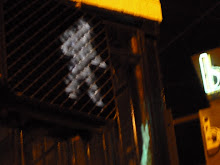Now I Remember
This morning, we took the bus from Plovdiv to Veliko Turnovo, where I spent most of the duration of my previous trip (a cultural exchange/mission trip for college students). Now I remember what I liked about this country!
Veliko Turnovo is situated in the Central Balkan region of Bulgaria, about 2/3 of the way east across the country and ¾ of the way north. It is the capital of the second Bulgarian kingdom (think Middle Ages … the Golden Age in Bulgarian history) and there are ruins of old Bulgarian, Turk, and Roman cities all over the place. Most of them were semi-restored in the 1970s by the then-occupying Soviet government, so they are either the original, in the falling down state, or re-built in brick. The town itself is built into the hillsides of the several hills that it encompasses, and the Yantra river runs through the edge of town. Veliko Turnovo isn’t anywhere near as big as Sofia … but as of this visit, it definitely qualifies as a city.
When we stepped off the bus, I couldn’t remember anything I saw around me. That was a bit of a panicked moment! We had a taxi take us to our hotel … the same one where I’d stayed on my first trip to Bulgaria. When we got there, things started to make sense. But this town looks so different! Andrew took a bunch of pictures of me looking dumfounded … I’d expected change, but not nearly this much. The whole city has been whitewashed, built up, and developed for tourists. All this actually makes it a much easier place for westerners like me and Andrew … though considerably less Eastern European. Bulgaria is planning to enter the EU in 2007, and much of this is presumably in preparation for that event. It does take some of the cultural flavor out of the place, but I think most people are better off economically. This is a very good thing … since the average wage is still only about $20,000/person/year with only 2 – 3 people in a household of 3 generations working. My eyes see this differently than others, though. We met a girl who is working in the Peace Corps and her mother, who was visiting her. It’s both of their first time in Bulgaria, and they commented “it’s like the country is 50 years behind the rest of the world! They tried to build a road to take advantage of tourism from the Athens Olympics … and they haven’t finished it yet!”
I’m glad I got to come back to this town and see how it has developed. The places I loved last time I was here have changed a lot. But it’s still a great town to visit. We tromped around the Tsarivitz castle (from the Middle Ages) and quite a few churches, and visited an art museum. It took us 3 days to do this, so you can imagine the slow pace and the high number of parks we just sat in and talked. But something in me feels settled somehow – like it can rest. And that’s good. Especially since I still love Bulgaria, would jump at the chance to learn the language, and would come back in a heartbeat … with a tour or cultural exchange or mission trip or something like that.

